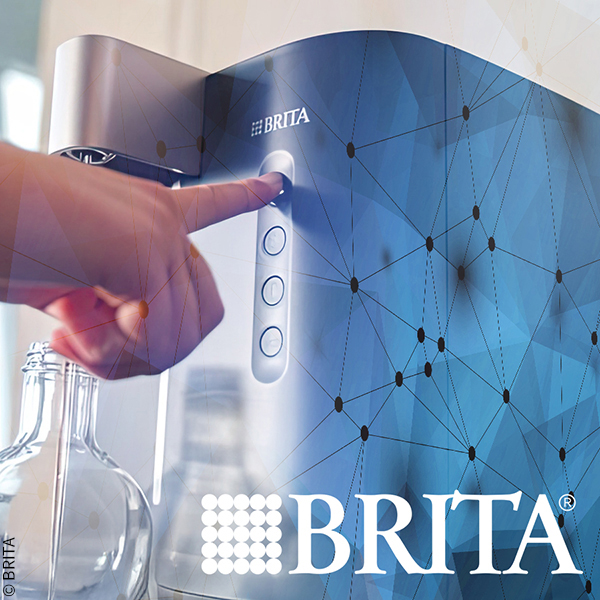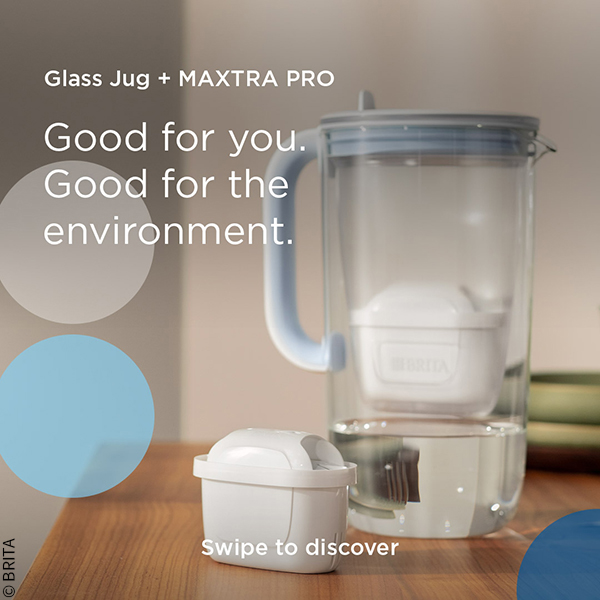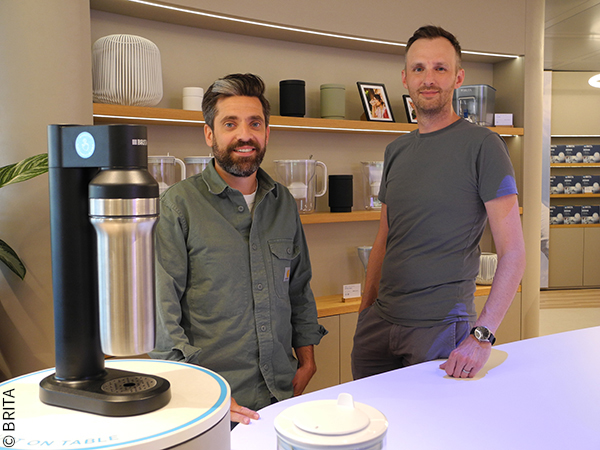
|
PROSTEP provides BRITA with advice on how to modernize its PLM/PIM landscapeBy Mario Leber Drinking water has made BRITA what it is today. The manufacturer of water filters and water dispensers has enjoyed rapid growth in recent years. At the same time, the company recognized how important end-to-end information flows in product development, marketing and sales are when it comes to global expansion. Which is why it has designed a sustainable PLM/PIM process and IT architecture with PROSTEP's help. 
An estimated 23 billion liters of water pass through BRITA products every year. The family-owned company, which is headquartered in Taunusstein, has been filtering and optimizing drinking water for almost 60 years, thus making an important contribution to sustainable water consumption. Today, BRITA is a global player with 27 national and international subsidiaries and a workforce of over 2,400 employees worldwide. In the last financial year, the company generated just under 730 million euros in revenue, over 80 percent of which was due to exports. Its well-known water filters, filter cartridges, water dispensers and faucet mounts for the consumer sector account for a large proportion of sales. In addition to all this, the company also manufactures professional filter solutions and smart water dispensers, which record and return data, for business customers. "Digitalization no longer stops with our consumer products," says Phillip Bunnemann, R&D Manager at BRITA. This means that new demands are being placed on product development when it comes to requirements management, model-based systems engineering (MBSE) and mapping the digital twin. Bunnemann heads the Next Gen Product Data Management (NGPDM) initiative together with Marius Hubert, Head of Strategic Engineering and responsible for the managing innovation projects in the consumer sector. Although the name suggests otherwise, this initiative is about much more than merely evaluating the existing PDM landscape. An important subproject involves, for example, selecting a PIM solution for managing product information and its distribution to the global marketing and sales organization. Hubert adds that the key driver behind the initiative is increasing efficiency throughout the entire product lifecycle. "Our aim is to improve end-to-end digitalization from the initial idea for a product through to its phase-out. To do this, we need to adopt a holistic approach and take our entire tool and process landscape to a new level of digitalization." Investment of strategic importance BRITA brought the consultants from PROSTEP on board with the aim of developing an all-embracing understanding of the steps required to increase efficiency over the long term. PROSTEP had previously provided the company with support in an earlier consulting project. In addition to expanding the PLM infrastructure, it is intended that focus in the current project now also be placed on including product information management, which in actual fact means that a large part of the organization is involved in the project. BRITA set up a cross-functional team, with a tandem project management team from product development and marketing/sales, that was tasked with recording the requirements of the different departments. The project team comprised not only stakeholders from the different countries but also from the areas compliance, quality management, marketing, packaging, logistics and IT, says Hubert. The core team consist of approximately eight to ten people. PROSTEP conducted several workshops together with the project team in order to first determine the current situation and draw up a 'big picture' of the information flows. This revealed numerous data silos in the value chain, which repeatedly cause the digital thread to break. "The next step was to find out which PLM capabilities we will need in the future," says Bunnemann. 
"PROSTEP was a great help when it came to developing ideas for the way we should work in the future by showing us what is technically possible and how other companies are exploiting these options." Seven primary areas of activity Together with the project team, the consultants identified seven primary areas of activity, ranging from a PIM hub for marketing to optimization of the product structure, change management and PLM/ERP integration through to material data management and partner collaboration. It is not just in the field of PIM that BRITA needs to exchange data with or import data from suppliers but also in the context of product development within the company. Other key area of activity is integration of requirements management in the overall architecture and further development of functionality in the direction of MBSE with the aim of making it possible to develop complex, software-intensive products, such as water dispensers, more efficiently. There will also be a bidirectional interface between the PLM and ERP systems that makes it possible to transfer not only item master data but also BOM information and synchronize it in both directions. The project team expects this to provide a major increase in efficiency. As part of the consulting project, PROSTEP carried out a rough target analysis to identify PLM capabilities that will be required in the future and to prioritize the subprojects. The next step in the roadmap is to define specific requirements regarding system selection for each subproject. As Bunnemann says, this is a project that BRITA would also like to carry out with together with partners: "It would be great if we could work together with PROSTEP again." 
One or two systems for PIM and PLM? It is not yet clear whether the PLM functionality can also be used to make product information available in marketing and sales or whether there will be two different systems. "We hope that we'll be able to manage it with just one solution. But following an initial analysis, we assume that we'll need a separate solution for PIM because the PLM systems don't satisfy all the requirements, especially when it comes to interfaces to e-commerce systems," says Hubert. Marketing and sales have slightly different requirements to those of employees in product development even though they use some of the same information. At the moment, when a new product is launched, a great deal of time and effort is put into making this information available on local e-commerce platforms or distributing it to local retailers. Changes to the product information also have to be updated manually, which is why BRITA wants to implement change management right the way through to PIM.
End-to-end digitalization as a competitive factor Making the process from product launch to phase-out more consistent is crucial for BRITA's competitiveness and future business success. As Hubert points out, "We've grown so much in recent years, especially with regard to exports, and are now coming up against our limits, which we can only eliminate with a higher level of end-to-end digitalization." A major advantage of the consulting project with PROSTEP was its methodical approach, which involved the analyses of the areas of activity and the structured and transparent processing of the information, which also facilitated internal communication. "It was also important to gain insights into what state-of-the-art technology is and to compare ourselves with the industry to see where we stand," says Bunnemann. PROSTEP also carried out a cost/benefit analysis as part of the consulting project. As Huber says, the key benefits are increased efficiency and time savings in development, thanks to the automatic creation of BOMs and avoiding unnecessary costs due to incorrect data statuses for example. They promise a rapid return on investment for the deployment of the new PLM and PIM solution. |
|
| © PROSTEP AG | ALL RIGHTS RESERVED | IMPRINT | PRIVACY STATEMENT | YOU CAN UNSUBSCRIBE TO THE NEWSLETTER HERE. |

